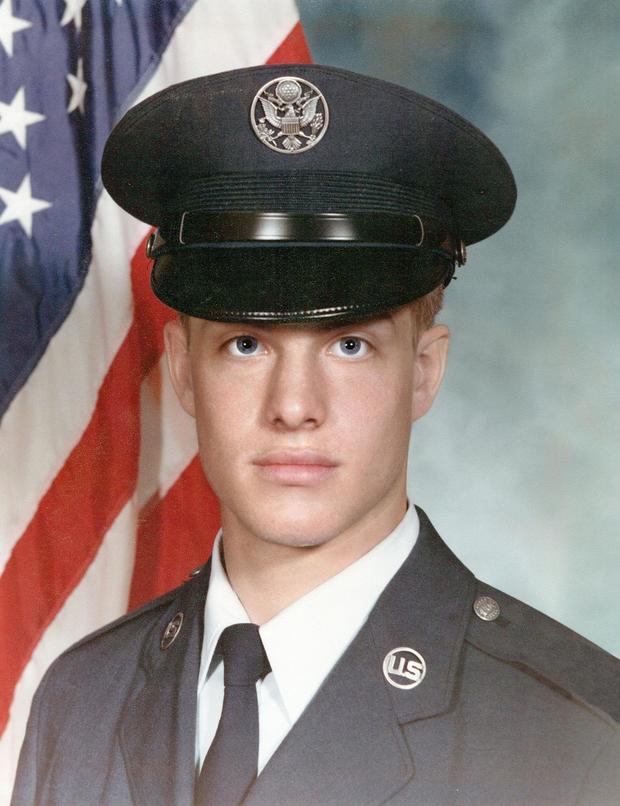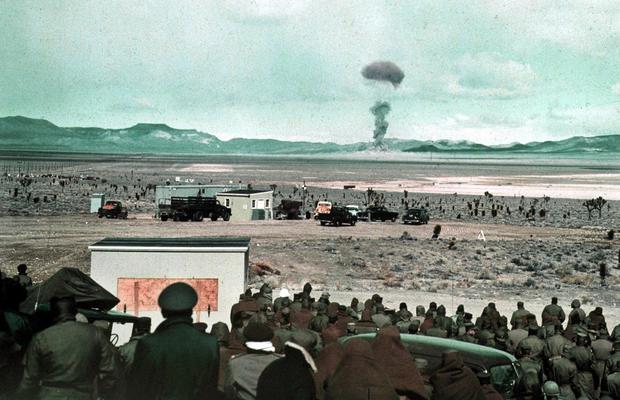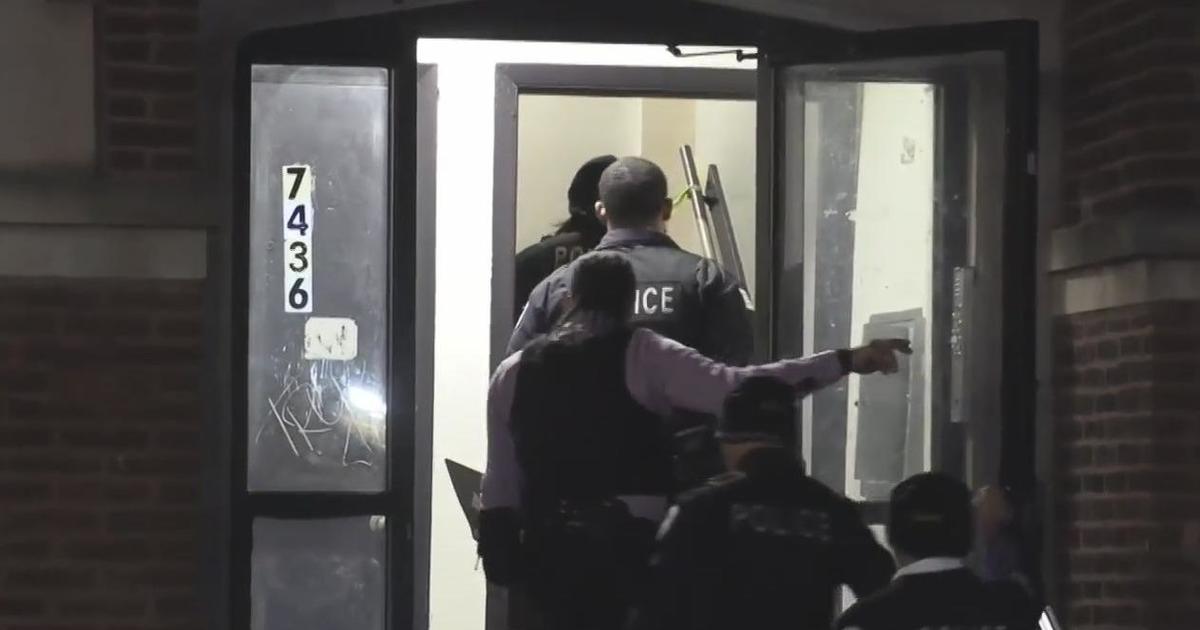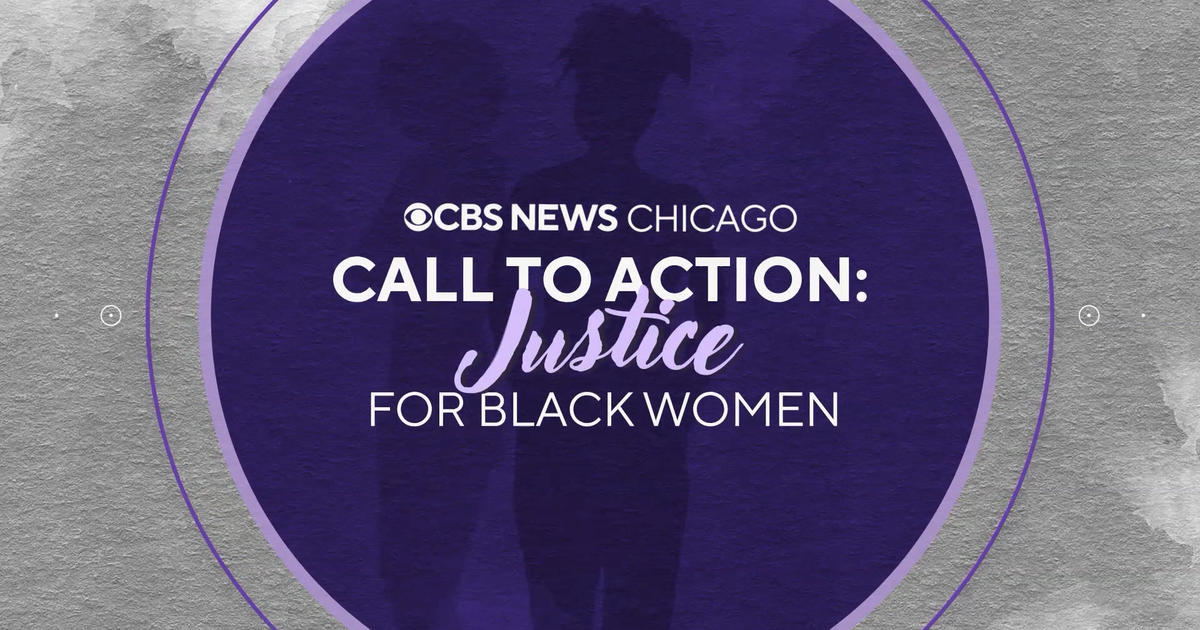"Betrayed:" Vets say nuclear site made them sick, but government won't acknowledge they were there
CHICAGO (CBS) -- It was 1980, and the Cold War was continuing to escalate, when Mark Ely left his home in Waynesville, Missouri, and joined the Air Force as a technician.
Ely was in his 20s – healthy, active, and on the Air Force powerlifting team. Five years later, in 1985, he was sent to the Tonopah Test Range in Nevada, on a secret mission at a classified site 140 miles from Las Vegas. It's also sometimes referred to as Area 52.
In his five years there, Ely inspected secretly obtained Soviet MiG fighter jets to find their weaknesses. This work was done in confined hidden hangars, or hush houses, with jet engines roaring.
"Your hands are shaking, and your eyes are shaking, and your brain is shaking… so that vibration is shaking you and your whole head is moving," said Ely, now 63, of Naperville. "Sometimes we would remove our headset and pull out our earplug, and blood would just come running down our cheek. We would rupture our eardrums."
But it wasn't just the planes. For decades, the federal government conducted nuclear bomb tests near the site. According to a 1975 environmental assessment from the U.S. Energy Research & Development Administration, testing of weapon ballistics and chemical explosives scattered toxic and radioactive materials in the area. But Ely didn't know this.
"When I went up to the area, it was real cool being assigned to a top-secret assignment," said Ely, of Naperville. "So, you go up to that area and you're doing that job, and it's a very elite moment. And you have this belief that everything there is safe, and everything you're doing is contributing to the greater good. Somewhere up the food chain, someone knows differently."
Ely is one of many – perhaps hundreds – who believe their illnesses are connected to their time at Tonopah.
"It scarred my lungs," he continued. "I got cysts on my liver. I started having lipomas, tumors inside of my body that I started having removing. My lining in my bladder was shed, and I started peeing blood and my bladder even shrunk. I got stage 3 kidney disease."
But because the federal government won't acknowledge the service of those stationed at that specific classified site, these veterans say they've been fighting for decades to prove it's the reason they're sick – and they have struggled to get medical compensation like other veterans can.
"Someone at the top made level made a horrible decision," Ely said. "And my opinion – they did betray us."
The consequences of silence
In 1987, Ely signed a non-disclosure agreement with the Air Force, which prevents him from sharing classified information about his work at Tonopah "in the interest of national security," according to a copy of the agreement obtained by CBS Chicago. It also says Ely could be criminally liable for any unauthorized disclosure of information.
He said this silence also prevented him from getting proper medical treatment. He first began experiencing headaches, dizziness, and discharge from his chest in 1986 – only a year after he got to Tonopah, records show. He went to an offsite medical center at Nellis Air Force Base for treatment, but he couldn't give the doctor specific details that might've helped link his work to his health issues, he said.
Even in his interview with CBS Chicago, Ely struggled with what he could share about his time at Tonopah.
"We're told we have to keep that secret," Ely said. "So, when we're on site, you just tell them what the problem is. You let the physician come up with their own conclusion. You don't lead them in anyway. So, you can't say, 'I was exposed to a Soviet MiG [jet fighter aircraft] at 166 decibels and it caused X, Y, Z.' You got to say, 'I have a liquid coming out my chest, what do you think happened?'"
Ely thought if he simply lived a healthy lifestyle, he could overcome the health issues. But as time went on, and after his work was done at Tonopah, his conditions worsened.
"At that moment I realized I'm not going to win this," he said. "I'm not going to exercise myself out. I'm not going to juice myself out, I'm not going to do my health living. I'm not going to win. I'm going to lose."
He's not alone. Dave Crete, now 59, worked as a security police officer at Tonopah from 1983 to 1987. He said he has tumors and pulmonary issues related to his lungs.
"We're talking about people working on our soil, who didn't have the opportunity or the warning that you might end up getting radiation contamination," said Crete, of Las Vegas.
Both Crete and Ely struggled to get records from the Department of Defense and Air Force to prove they were stationed at Tonopah. Ely said it took 29 years of filing requests with several federal agencies before he was able to get just some of his medical records from Nellis Air Force Base, but still none prove he was stationed at Tonopah.
The closest he's come is a document showing his service assignments from 1992. But the document only lists his job title, "aircraft inspection technician," according to a copy of the document obtained by CBS Chicago. The location he worked at isn't listed. Where it should be, it only says, "data masked."
"All our whereabouts for that period of time is black," Ely said. "We're going places, we're doing things that's beyond the tracking of the military. They're not going to track it. There's no records from it. You're invisible."
In his effort to document what he could, Ely diligently kept a paper trail of medical records from his treatment after he left the Air Force. Although he still couldn't share much from his service with doctors, one document from a radiology appointment details the extent of Ely's illnesses. It may also be the only record that documents his exposure at all.
"Patient has had a productive cough for 12 days," the document says. "Has had brown blood and bright red blood come up. History of pneumonia 7 times during life, finishing an antibiotic. Has lung damage from chemical exposure in the Air Force. Is on medication for hypertension."
CBS Chicago's review of Ely's medical records reveals he has been treated for at least 18 different illnesses, disorders, and other health issues in the last four decades. As time went on, Ely said he couldn't remain silent any longer – because in addition to his own health problems, there are other veterans who were stationed at Tonopah and are struggling too.
Ely said some of them previously asked him to write and sign "buddy statements" on their behalf. These documents could help confirm they worked together at the same site, in an effort to get disability benefits. But he was too afraid to violate the confidentiality he agreed to in the Air Force, so chose not to sign them. He's lived with guilt ever since.
"I was thinking I was being honorable by doing the right thing," he said. "…I know I failed them. There's nothing that can change or overcome that, but I can mitigate it. I'm mitigating it by helping other veterans and by doing things to help me sleep at night."
"The juice was worth the squeeze"
Illnesses and symptoms like the ones Ely and Crete suffer from have long been associated with exposure to various types of radiation and toxic chemicals, including beryllium and uranium. Prior to their service at the site, the federal government had already acknowledged the spread of these toxins in the area, but downplayed their impact.
The 1975 environmental assessment from the U.S. Energy Research and Development Administration examined the effects of continued military testing on the environment. Due to its isolated geography, the report said Tonopah was first used in 1957 to measure weapon ballistics, chemical explosives, and rocket and gun firings.
The report said some explosions tests "have scattered and may yet scatter some beryllium and depleted uranium." It acknowledged the chemical toxicity of uranium could affect kidney function. If inhaled over an extended time, it also said beryllium may lessen lung efficiency and "could be fatal."
1975 Environmental Assessment of Tonopah by Adam Harrington on Scribd
"You're breathing in radioactive dust, and that breathing in radioactive dust is also what causes most of the other problems that people have in that develop, like all the cancers that we see – and that's what you were exposed to at that base," Crete said. "We drank it. Our food was cooked in it. We showered it water that was contaminated."
Still, the assessment concluded discontinuing the work there would be "against the national interest" and "the environmental costs inherent in the work are small and reasonable for the benefits received" of continued testing at the site.
Ely and Crete questioned why the Department of Defense and the Air Force stationed them and anyone else at the site despite knowing the potential harms.
"The piss-off is when you find out that they knew – when I found out they decided the juice was worth the squeeze, in a government report that said the future benefit to the national defense if outweighed by any future liabilities associated with environmental contamination," Crete said.
Today, Tonopah is still actively being used by the government for testing weapons. It's described as "the testing range of choice for all national security missions" that "provides research and development test support for the Department of Energy's weapon programs," according to Sandia National Laboratories. The lab is a contractor for the U.S. Department of Energy's National Nuclear Security Administration.
Test activities at the classified site include air drops, gun firings, ground-launched rockets, and explosives testing, Sandia's website says.
Ely and Crete believe the Department of Defense and the Air Force won't acknowledge they were stationed at Tonopah because the site is still being used today.
"Because it's a secret, because they want to hide us, because they have a couple of bases out there, because it's going to cost money," Crete said.
When asked how many workers are stationed at Tonopah today, a spokesperson for the Air Force said they could not disclose the information "due to operational security concerns."
"You think that your employer wouldn't intentionally send you somewhere knowing that it was probably going to make you sick," he continued. "Why won't the government just acknowledge that you and the others who were there got sick there? Because they sent people there every day – now, still – to all the same places that we worked at."
What frustrates them even more is the federal government has already acknowledged other government employees who've worked at Tonopah. But the program doesn't apply to veterans like Ely and Crete.
In 2000, President Bill Clinton signed the Energy Employees Occupational Illness Compensation Act, which compensates current or former employees of the Department of Energy for similar illnesses and exposures, including those who were stationed at Tonopah specifically.
So far, the program has paid out $25 billion in claims to more than 141,000 Department of Energy workers since the bill went into effect in 2001, according to statistics from the Department of Labor. But Department of Defense workers, like Ely and Crete, aren't covered under that bill.
Ely said he feels betrayed.
"Radiation is not prejudiced. It doesn't care who you work for," Ely said. "It doesn't care what your job is. It doesn't care at all. You're here. You're exposed."
CBS Chicago contacted all the federal agencies mentioned by Crete and Ely in their interviews.
The Department of Defense referred CBS Chicago's questions to the Air Force. The Air Force confirmed Ely's and Crete's service, but did not say where.
"It makes me incredibly mad," Ely said. "And it hurts me too, because [the government is] supposed to have my back. I had theirs. And I want them to have mine. I want them to have mine for my family and the people who served up there, my brothers. It hurts me incredibly. It hurts me deeply."
A push for legislation
While there is no public, comprehensive list of people who've worked at Tonopah, Crete spent the last eight years using Facebook and Air Force reunions to find other veterans with similar illnesses, including family members of those who've died from their diseases.
Crete shared a database he created with CBS Chicago, which lists hundreds of people who he says worked at Tonopah and have similar illnesses. He's made that the genesis of his non-profit advocacy group called the Invisible Enemy to bring awareness to their fight.
Crete has also used his research over the years to push for federal legislation that would acknowledge those who served at Tonopah and finally compensate them for medical treatment. Through that process, he connected with Rep. Mark Amodie (R-Nevada), who is in the process of drafting legislation, a spokesperson said.
"The Invisible Enemy's mission is to get that bill introduced and passed, so that we can get folks what they need," Crete said. "And when guys get sick, take care of them. When guys die, take care of their family."








